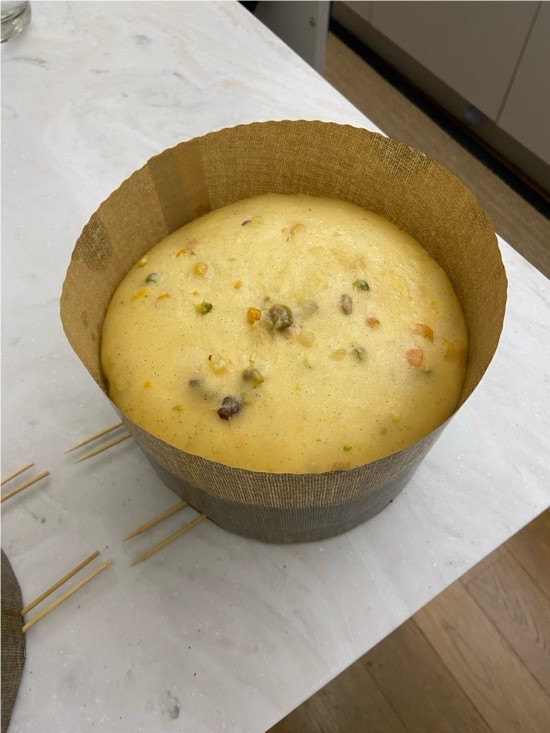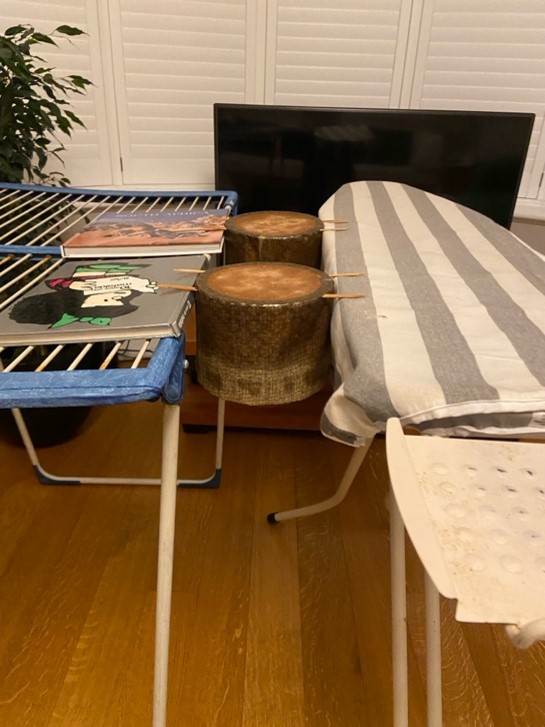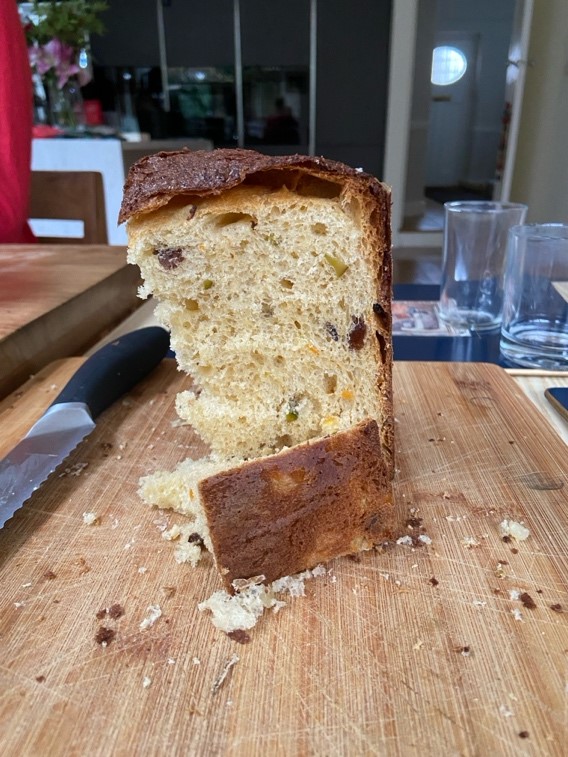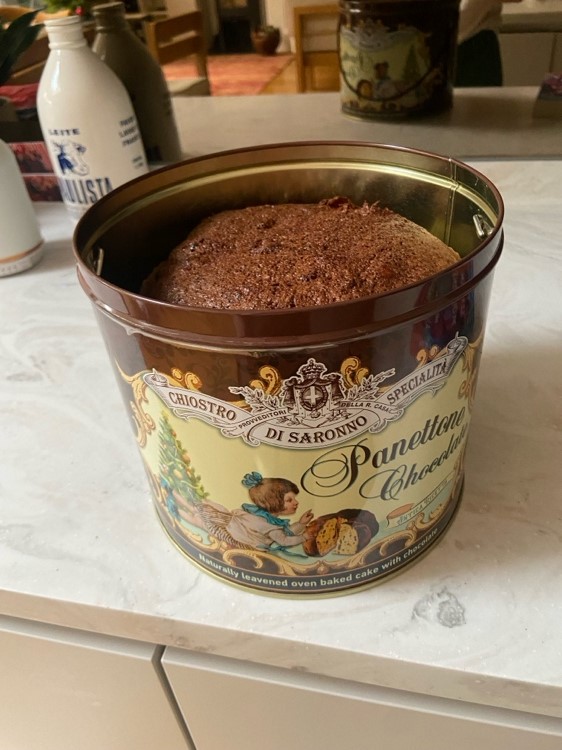I like to consider myself a reasonably accomplished baker. I started making sourdough during the lockdowns and I’ve experimented with everything from brioche to bagels in the time since. Last year, with Christmas looming, I felt a calling (with the possibly misplaced confidence of someone who hasn’t made an inedible loaf of bread yet) to try my hand at panettone.
Panettone is an Italian sweet bread, which is typically filled with fruits and nuts. However, its rapid increase in popularity in recent years has led to creation of new flavours, such as the chocottone, which gained its name from the addition of chocolate to the dough. The wave of Italian immigration to South America in the late 19th century introduced panettone to countries like Brazil and Peru, which have since adapted the recipe to local tastes and ingredients, with the previously mentioned chocottone becoming very popular.
Traditional panettone is leavened with a pasta madre – a sourdough starter which has a lower water content than usual. I could have made my panettone with commercial yeast, but, as I had plenty of revision to avoid, I decided to go the old-fashioned way and use a pasta madre (although my recipe did call for a small amount of instant yeast as well). And so, armed with a recipe and my Italian friend’s blessing, I set forth on the three-day journey ahead.
A sourdough starter is fermented flour and water that contains wild yeast and lactobacilli (the same bacteria that makes yoghurt and gives it a sour taste). A small portion of this starter is taken and used to make the pasta madre, which will act as the leavening agent in the bread. It’s fed every four hours for a day, before being added to the main dough. By using a ‘drier’ sourdough starter, its sour flavour is reduced (because who really wants to eat sweet and sour bread?) by reducing the number of bacteria in the starter, while the yeast population remains mostly unaffected.
Panettone dough is enriched, which means it has added butter, sugar, and eggs. While this adds to the flavour, it also inhibits the formation of gluten. Gluten is the protein that gives bread its structure and allows it to rise. Gluten development can be increased with mixing, as it allows more of the flour to become hydrated. However, in enriched doughs, this is hindered. Sugar is hygroscopic (it absorbs water), which leaves less water to hydrate the dough, while fats like butter coat the gluten proteins.
This can be mitigated by adding the butter, sugar, and eggs in stages, and after the dough has had time to build some structure. The dough is also left to rest for a few hours (bulk fermentation) which helps to further develop the gluten in the bread before it is shaped. Eventually, the dough can be stretched so thin you can see light coming through it, which is usually a good sign that it’s building strength.
Then the additional ingredients are added: in my case, pistachios, candied citrus peel, raisins, and vanilla. The dough is divided and added to panettone moulds, which are made of stiff cardboard, and left to rise in a warm environment for a few hours. The warmth is important, as it ensures the yeast enzymes are working in their optimum temperature and produce enough carbon dioxide to make the bread rise.


Finally, the time has come to bake the bread. After 40 minutes of anxious waiting, the timer goes off and you pull your loaves from out of the oven, thinking you can finally enjoy the fruits of your labour. But you’d be mistaken – your panettone must be completely cooled before it can be cut, and this cooling must be done while the bread hangs upside down. This prevents the delicate bread from collapsing in on itself, so the air pockets and fluffy texture created during proofing can be preserved. Thanks to some skewers slotted through the bottom of the moulds, and the precarious use of an ironing board next to a drying rack, my bread survived the night. Both loaves were gone by the next morning, so I’m calling it a success. Thus, to all you newly inspired bread bakers, I hope you can go forth and make your own panettone, and if not, that you may enjoy one, nonetheless.


